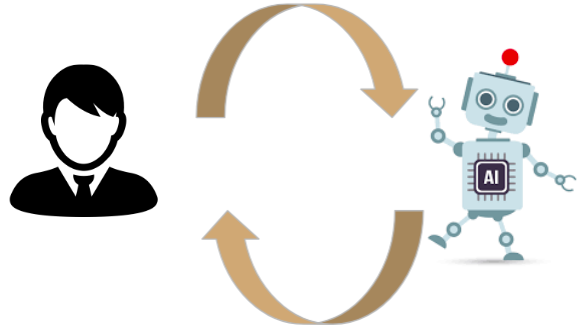Human-AI Symbiosis
Published:
AI should be our partner, not competitor
After all, the goal of building AI is to help human. Recent progress has shown remarkable performance of AI, often in terms of how it outperforms human counterparts in specific domains. However, is it a good indicator of smart AI? Modern AI has been criticized for its uncontrollable manners, despite being so smart in certain tasks or training data. AI’s biased, erratic, overfitting and unexplained behaviors prevent wide applications of AI-enabled solutions in critical domains (healthcare, politics, etc.) and industrial sectors (business, banking, etc.).

Human interacts with AI
One pathway to get out of this bind is to design new generations of AI that can understand more human’s need and cooperate smoothly with users. Human-In-The-Loop, as an example, utilizes human’s knowledge (label, feedback, demonstration) to guide AI towards correct behaviors. This requires a trade-off between extra human cost and good AI behaviors, which asks for sample-efficient human involvement. Another way is to endow AI with an ability of self-assessment. If AI knows its strength and weakness, it can adapt its behaviors or at least ask for human supervision to eliminate harmful consequences. That level of awareness is related to challenging topics such as consciousness and uncertainty. Finally, AI needs to move beyond statistical correlation, and can discover/make use of causality in inference. Knowing the true factors that govern the concurrence of events enables generalization of AI and decrease of unreasonable predictions.
Our research program focuses on 3 broad areas:
